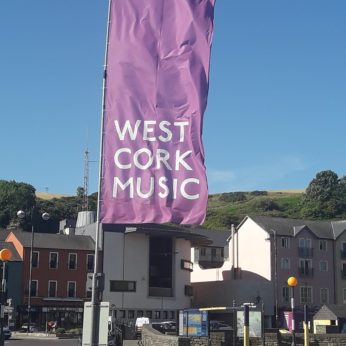Composer: Antonin Dvořák (b. 1841 - d. 1904)
Performance date: 08/07/2017
Venue: Bantry Library
Composition Year: 1878
Duration: 00:31:57
Recording Engineer: Richard McCullough, RTÉ lyric fm
Instrumentation Category:Sextet
Artists:
Christopher Marwood -
[cello]
Pieter Wiespelwey -
[cello]
Dana Zemtsov -
[viola]
Simone Gramaglia -
[viola]
Tamsin Waley-Cohen -
[violin]
Viviane Hagner -
[violin]

Dvo?ák
was catapulted to international fame as the result of a grant for
impoverished composers set up by the Austrian government in Vienna –
Czechoslovakia was at that time part of the Austro-Hungarian Empire.
The judging committee included both the renowned critic Eduard
Hanslick and the even more famous Johannes Brahms. In each of the
five successive years 1874-8 Dvo?ák won a prize and in 1877 Brahms
took active steps to further Dvo?ák’s career by recommending him to
his publisher Simrock. Dvo?ák knew he was onto a good thing and
bombarded the Highly
revered
Master
with
letters and dedications and scores. The results were spectacular for
Simrock immediately undertook to publish Dvo?ák’s compositions and
Brahms arranged for the String Sextet to be premiered in Berlin.
The
players were no less than the Joachim Quartet led by the famous
violinist himself for whom Brahms wrote his Violin Concerto. The
cellist in the Quartet was Robert Hausmann for whom, along with
Joachim, Brahms wrote his Double Concerto. Dvo?ák was quite unused
to being feted by such distinguished musicians and the delighted
composer wrote to a friend: How
they played all of it, with what understanding and élan, I cannot
even tell you now as words are failing me.
Joachim and his friends were equally excited for they could see at
once the extent of Dvo?ák’s genius and were delighted to be his
standard bearer.
Dvo?ák
must have known the two Brahms Sextets for the richly flowing and
luscious melody of the Allegro
moderato
is redolent of the older composer’s achievements with this ensemble.
The two themes are similar in mood, full of the Czech composer’s easy
gift for songlike melody. It was this gift that Brahms so admired,
for his own melodic inspiration was much harder won and he fairly
gushed over the Sextet. It
is endlessly beautiful. I always have the feeling that people don’t
admire this piece enough, this splendid invention, freshness and
sonorous beauty. This
first movement is in the customary sonata form with a dramatic and
colourful development after the exposition and repeat. The coda
explores the main theme once more and the ending has its surprises.
The
Dumka
has a fast-moving, cheerful main section enclosing slower more
pensive music. The former clearly has folk origins with its simple
little ditty that Dvo?ák cleverly exploits with the different
instrumental combinations at his disposal. The slower section is
equally folk-like but more sentimental than melancholic; it reappears
a second time and the movement ends with a miniature coda. The
furiant
is an exuberant Bohemian folk-dance featuring alternate metres and
this particular version would make one wish for a revival of the old
custom of encoring individual movements. There is a slower central
Trio, which is hardly less exciting though it begins innocently
enough. Joachim must have loved this movement. The Finale is a theme
with six variations. It begins life at the andantino
end
of allegretto
and
is replete with the rich middle voices of the violas. The variations
are straightforward enough, the first two more lively, the third
slower and chromatically richer, the fourth has a Mozartian colouring
while the fifth exploits some vibrant pizzicatos. The last variation
is huge fun as he decides to turn his six strings into an orchestra
and gives them their head.
Francis
Humphrys
Copyright © 2025 West Cork Music. All rights reserved.
Designed and developed by Matrix Internet